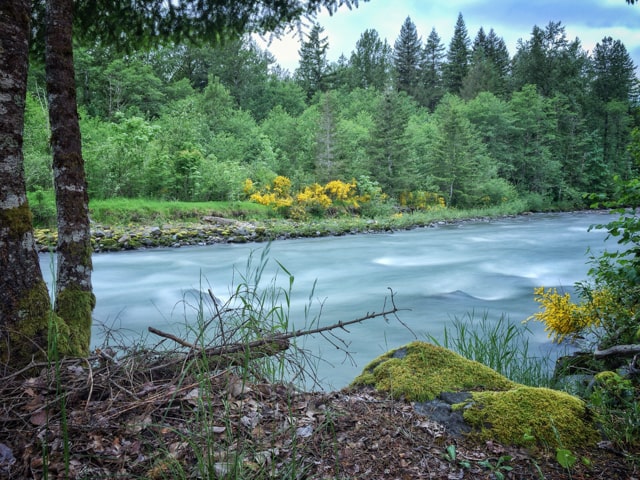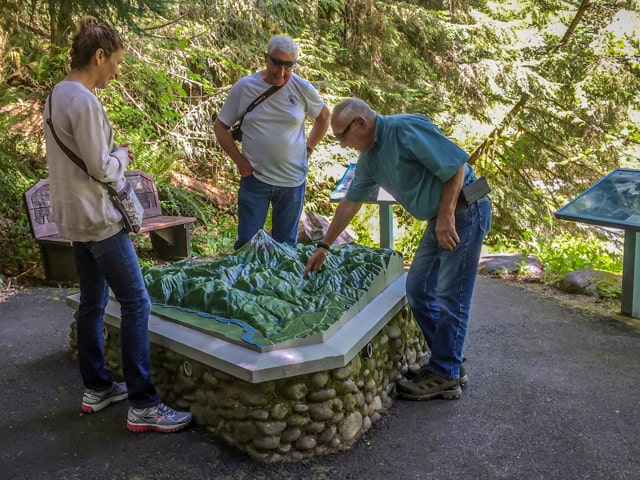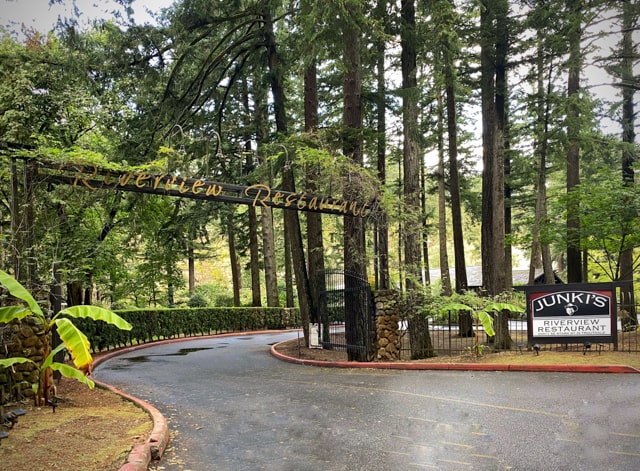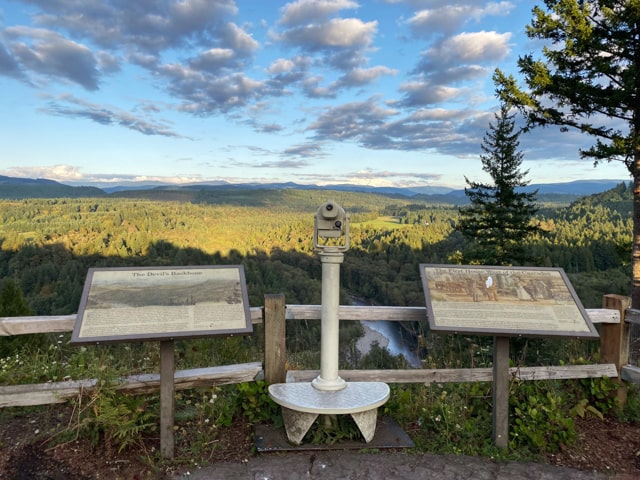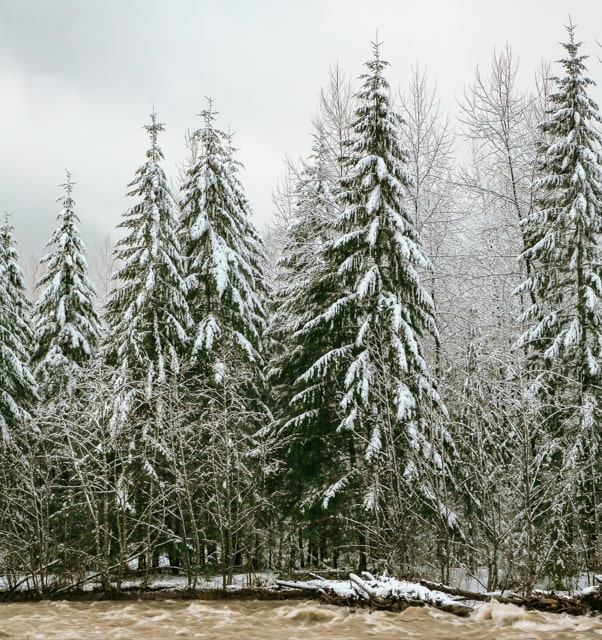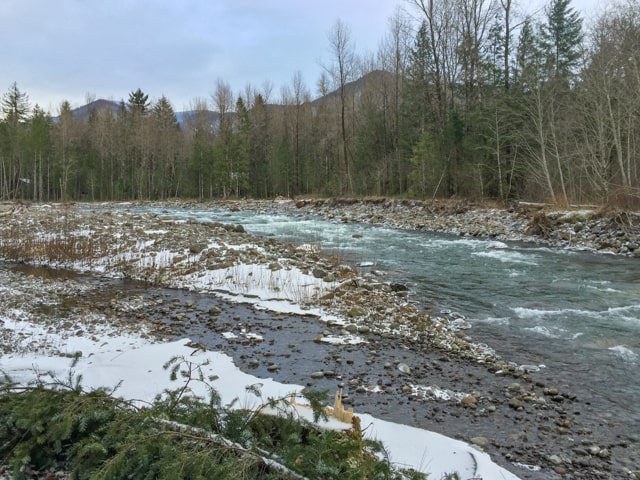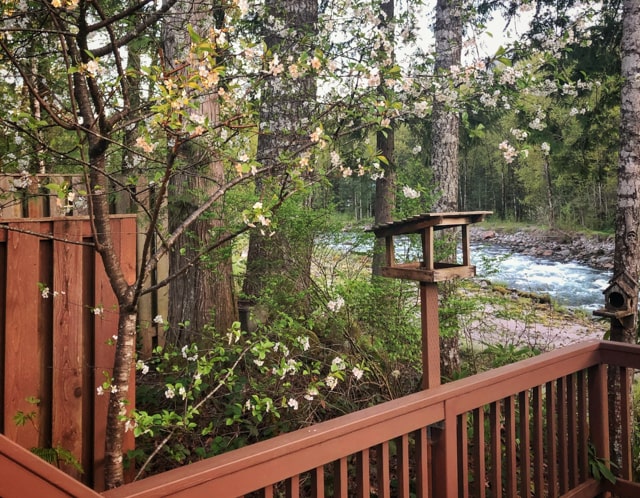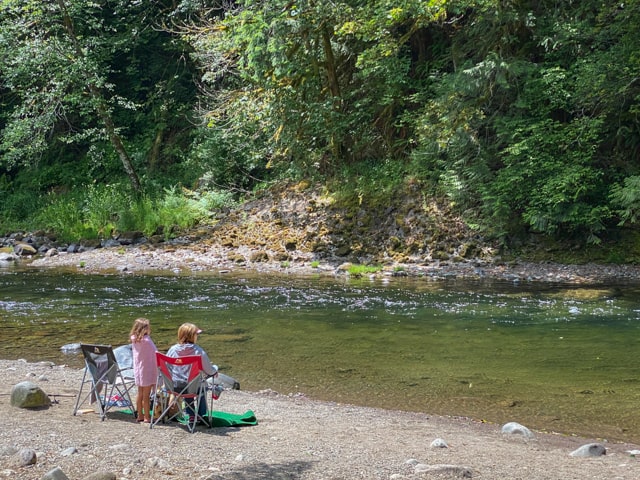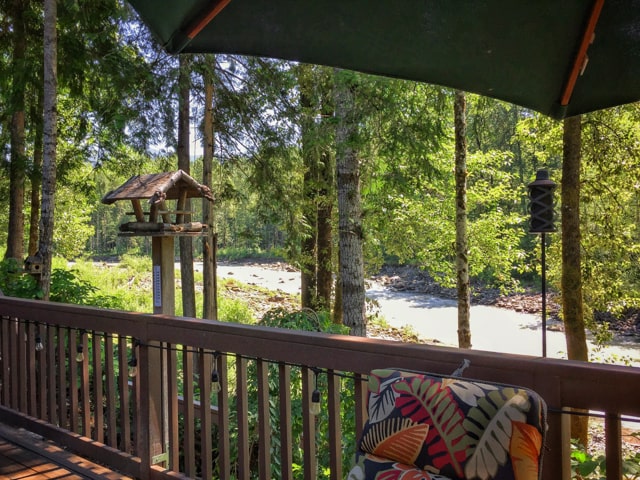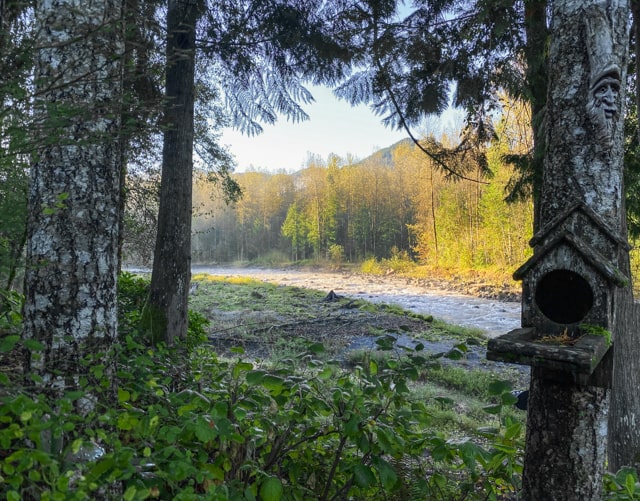The Sandy River is a torrent or a gentle cascade, depending on the time of year. She is a river for all seasons.
Our good fortune is to own a home alongside the Sandy River in the Pacific Northwest. In Oregon, the Cascade Mountains is where we call home many times every year.
The River Banks
Lining the riverbanks are Red cedar trees and Douglas firs, along with colorful poplars that shine bright gold in the autumn sun. Countless trails meander along the shoreline where you can forest, bathe, and commune with nature.
The Sandy River is home to Bald eagles, Canadian geese raising their young, and many other bird species. They are more entertaining to watch than television and video games.
About the Sandy River
The Sandy River, known as Quicksand River in 1805, was named by American pioneers Lewis and Clark on their Oregon Trail expedition. Because there was so much sand washed down into the river’s mouth from a previous volcanic eruption of Mt. Hood, it was impassable by the wagon trains and pioneers heading west to the Pacific Ocean.
Renamed in 1845, the Sandy River originates from Reid Glacier on the southwest edge of Mount Hood. It flows south over Old Maid Flat just north of Zigzag Mountain and the Mount Hood Wilderness.
Thirty-nine miles from the mouth, the Sandy River passes the community of Brightwood and our home on the remnants of the Barlow Trail. The Barlow Road is the last leg of the Oregon Trail, built in 1846 by Sam Barlow and Philip Foster so the pioneers could bypass the Columbia River rapids. Today, the Sandy River in our backyard is a challenging set of rapids for those brave enough to test her in a kayak or innertube.
Just a mile further down the road from our home, the Sandy River meets the Salmon River’s confluence. In four more miles, they pass the community of Marmot, where the Devil’s Backbone separates the Sandy River from the Little Sandy River.
Lodging on the River
The Sandy Salmon Bed and Breakfast is a luxurious lodge amidst the trees with full access to the river. On one occasion, the lodge, built as a retirement project for owners Jerry and Maggie Emmert, hosted George H.W. Bush on a fishing trip. Imagine witnessing the former president in hip waders fly fishing in the shallows surrounded by Secret Service agents.
The Sandy River joins the Columbia River in Troutdale, about 120-miles from where the Columbia feeds into the Pacific Ocean.
Dining on the River
Most of our summer celebrations take place at The River View Restaurant. Located on the Sandy River in Troutdale, they offer casual outdoor and indoor dining and live piano or stringed instrument music at the dinner hour.
Outdoor Activities
In 1988, Congress designated two separate Sandy River segments to the National Wild and Scenic Rivers System, preserving each section as wild, scenic, or recreational.
Activities on the river include hiking, backpacking, camping, and fishing. Kayaking, non-motorized boating, and floating are popular in the summer. Cross-country skiing in the winter on numerous trails throughout the parks along the river draws many outdoor enthusiasts.
My favorite sports are bird watching, observing wildlife, hiking easy trails, and marveling at those courageous individuals who challenge the river on the water.
Sandy River Valley
Jonsrud Viewpoint in Sandy, Oregon, offers stunning views of the Sandy River Valley and the Devil’s Backbone.
Sandy, the gateway to Mt. Hood on the east side of the mountain, and the Mount Hood Scenic Byway will carry you up Highway US 26 to parallel the historic Barlow Road and the Sandy River. This road also takes you to the origin point of the river itself.
The Water Runs Deep
Or not so much. Over the years, the river has changed course many times. Sometimes threatening and destroying homes along the banks. The flood of 2011 carried away a few feet of the bank in front of our house. It deposited an island between the opposite bank and us, offering a safe place for Fourth of July fireworks celebrations with only a little creek crossing needed to get there. Mother Nature gives and takes in the State-preserved landscape.
Sound
The Sandy river lulls us to sleep at night in her dulcet tones and accompanies our coffee on the deck in the morning during the summer.
Cocktail hour is our favorite time of day to sit outside and relax to the sound of waves tumbling over the rocks when the days are long and dusk is slinking in.
When heavy spring rains flood the landscape, you can hear the thud and tumble of boulders like a giant bowling alley gone wild. It’s fearsome in all its power. You’ll find us cowering in the Great Room with the fireplace warming our toes.
Color
The Sandy River’s color ranges from crystal clear, deep turquoise to a silty, dull appearance of creamy chocolate milk. Rain at high elevations causes the runoff to wash dirt and fine particles down the river. Eventually, the rocky filter allows the particles to settle and returns the water to its crystalline nature.
Conclusion
Sometimes we take for granted the comforts we experience on our slice of the river. We forget the history that made the area a feat of resilience and stamina for pioneers struggling to reach the Pacific Ocean.
Every season affects our lives on the river. Endearing, exciting, joyful, frightening, uncontrollable. Always something new, never boring, ever exciting. A river for all seasons.
A River for All Seasons

About Julie Diebolt Price—Julie is a professional photographer, educator, travel writer, and journalist. She helps corporations and solo entrepreneurs establish their brand with imagery and business training. She educates and mentors aspiring photographers. As a journalist who loves to travel, she creates memorable experiences and shares them with words and pictures. Learn more about Julie and her work HERE.

